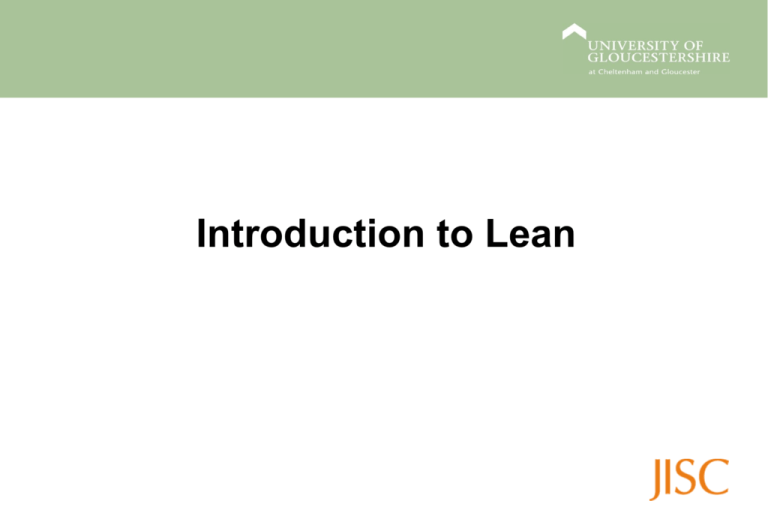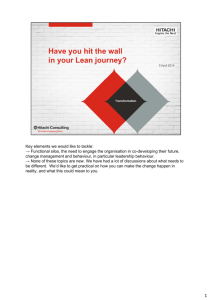Lean at the University of St Andrews
advertisement

Introduction to Lean Benefits of Lean Why go Lean? Improvements in: – Customer service – Quality and efficiency – Staff morale – Internal communication and cooperation Lean is simple to implement and results are easily sustained. Principles: – Reduced waiting times – Lower costs – Improved customer experience 2 Lean in a University environment Typical Questions about Lean: Why here, why now? Isn’t “Lean” more appropriate to manufacturing and heavy industry? Is this just another management fad? 3 The five principles of Lean: • Specify Value • Identify the value stream • Make the process flow • Let the customer pull • Continual Improvement 4 The eight wastes Lean begins with an awareness of waste in our administrative processes, and in considering how we can reduce or remove it. The eight wastes we may find are: • Transport • Inventory • Motion • Waiting • Over-production • Over-processing • Defects • Skills misuse 40% of University Administration time is spent putting things right that have gone wrong 5 Implementing Lean Tools include: Data-gathering techniques Charts and diagrams Value stream mapping 5S for workplace organisation Visual management 6 Knowing what your customer wants Who is your customer? Your customer = anyone, internal or external, who is affected by your processes or services What does your customer want? The best way to find out is to ask them. Encourage feedback – good AND bad. A silent customer isn’t necessarily a happy customer, and you can only fix the problems if you know what they are. 7 Measuring and data-gathering Process Maps can from the basis of measurement. Additional data: – Timings – Errors – Log Issues 8 Mapping the customer experience A key part of the Lean methodology is value stream mapping. Value is anything that is worthwhile from the customer point of view. The stream is the journey from end to end. The ideal process flows smoothly, to deliver output to the downstream customer as quickly and efficiently as possible. Once you have a current state map of your customer journey, identify all the steps which add value to the customer. Everything else is either non-value adding or is waste. 10 Using 5S to organise your workplace 5S is a way of eliminating waste in your immediate office environment. It gives workers more control over their workplace and is a great way to start an improvement initiative. The 5S system has five key activities: Sort Sustain Straighten Standardise Shine 11 Implementing Lean The following is necessary to implement Lean successfully: Making a real time commitment – the more time you can put in, the quicker the results and greater the rewards will be. Allocating the resources and getting everyone involved. Being clear about what you want to achieve. Communicating with your team, and listening to their suggestions. 14





